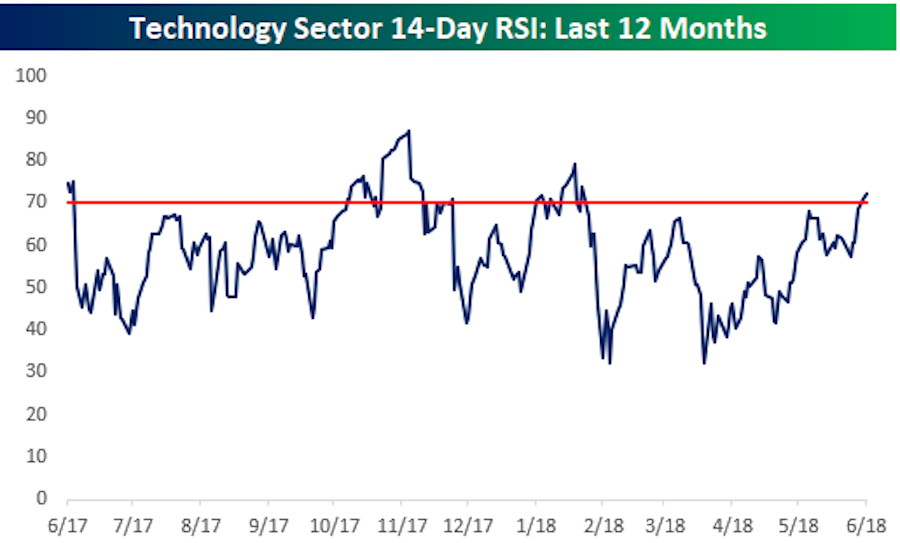Initial claims, Smucker earnings — What you need to know in markets on Thursday
The June rally continues.
Stocks finished higher across the board on Wednesday with the Dow adding 346 points, or 1.4%, to pace gains among the major indexes.
The S&P 500 and the Nasdaq were also higher, however, as the benchmark S&P 500 rose 0.86%, or 23 points, and the Nasdaq added 0.67%, or 51 points. After just four trading days in June, each of the major indexes is up more than 2% for the month.
On Thursday, the economics and earnings calendars are fairly quiet, as they’ve been for most of the week, with the weekly report on initial jobless claims, as well as the Fed’s latest report on household net worth, highlights on the economics side.
And on the earnings calendar, notable reports out Thursday should include results from J.M. Smucker (SJM), Vail Resorts (MTN), and Broadcom (AVGO).

Tech’s strength
In case you missed it, tech is leading the market again.
As market commentator Lawrence McDonald noted early Wednesday, through trading on Tuesday, eight stocks — all from the tech sector except Visa (V) — accounted for more than all of the S&P 500’s 3% rise year-to-date.
Amazon (AMZN) and Microsoft (MSFT) alone accounted for more than half the move higher.
And when looking at the tech sector as a whole compared the S&P 500, the relative strength of the space against the broader market is now back at levels last seen in January, right before the S&P 500 made its highs for the year.
To some, this might be a sign that investors ought to be cautious. But the evidence does not support the notion that outperformance — even significant outperformance — from the sector portends bad times ahead for tech stocks.
In a note to clients on Wednesday, Bespoke Investment Group noted that the Relative Strength Index, or RSI, for the S&P 500’s tech sector topped 70 for the last 14-day rolling period. In layperson’s terms, this indicates that sector has been significantly outperforming the S&P 500.

Bespoke notes that to market technicians, or those who watch charts for signals on when to buy or sell stocks or sectors, this reading would indicate a market that is overbought and due for a pullback. Evidence why, according to Bespoke, appears somewhat lacking.
Over the last decade, there have been 15 instances in which the tech sector’s RSI topped 70 after having not done so for the prior two months. And Bespoke found that the average returns for the week and month after this occurrence was positive.
And even more recent history points to a good run for tech stocks after breaking into a new leadership role.
“What about that January period where the RSI was above 70?” Bespoke asks.
“The reality is that the first time in that period where the RSI moved above 70 after not having been there in the prior two months was all the way back in early October 2017 when the sector closed at 1,041.21. From that day to the January peak, the sector rallied 15%, and in the ensuing correction it never got back down to those levels. The technology sector has had a pretty impressive run over the last two weeks, but selling based on an elevated reading in the 14-day RSI reading hasn’t typically been a profitable trade.”
—
Myles Udland is a writer at Yahoo Finance. Follow him on Twitter @MylesUdland

 Yahoo Finance
Yahoo Finance 
